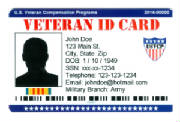|
|
|
|
Understanding Voc Rehab Benefits VA’s Veterans Benefits Administration’s Vocational Rehabilitation and Employment (VR&E) program is intended for veterans who have a combined service-connected disability rating of 20 percent or more and for certain service members awaiting discharge due to a medical condition. A veteran with 10 percent combined service connected rating may apply for benefits but must meet additional entitlement criteria. The mission of VR&E is to help veterans with service-connected disabilities and certain service members awaiting discharge due to a medical condition to prepare for, find and keep suitable employment. For individuals entitled to benefits but with disabilities so severe that they cannot immediately consider work as a viable option, VR&E offers services to improve their ability to live as independently as possible.
Services/Benefits that may be provided by VR&E include:
If your disabilities are so severe that you are unable to work, independent living services may be provided. A program of independent living provides the services and assistance necessary to ensure each eligible veteran is capable, to the maximum extent possible, of living independently and participating in family and community life activities with the added potential of eventually returning to work. Services/Benefits may include, but are not limited to the following:
To receive and evaluation for VR&E services, a veteran must: · Have received, or will receive a discharge that is other than dishonorable · Have a service-connected disability rating of at least 10 percent · Submit a completed application (VA Form 28-1900) for VR&E services Eligibility: The basic period of eligibility in which VR&E services may be used in 12 years from the latter of the following:
Subsistence Allowance - in some cases, you might require additional education or training to become employable. A VR&E subsistence allowance is paid each month during training and is based on whether you attend training full-time or part-time, the number of family members you have, and the type of training. In summary, a veteran or service member must complete an application and meet with a VRC to determine eligibility. If the VRC determines that an employment handicap exists as a result of a service-connected disability, the veteran is entitled to services. The VRC and the veteran will then continue counseling to develop a plan to address the rehabilitation and employment needs of the individual. The rehabilitation plan will specify an employment or independent living goal, identify intermediate goals, and outline services and resources needed to achieve these goals. The VRC and the veteran will work together to implement the plan and achieve successful rehabilitation. If a veteran is found not to be entitled to services, the VRC will help the veteran locate other resources to address any vocational rehabilitation and employment needs identified during the evaluation. Referral to other resources may include state vocational rehabilitation programs, Department of Labor employment programs for disabled veterans, state, federal or local agencies providing services for employment or small business development, internet-based resources for rehabilitation and employment, and information about applying for financial aid. |
|
See Your VSO for More Details.
|
|
|
[ Benefits News ]
|
|

